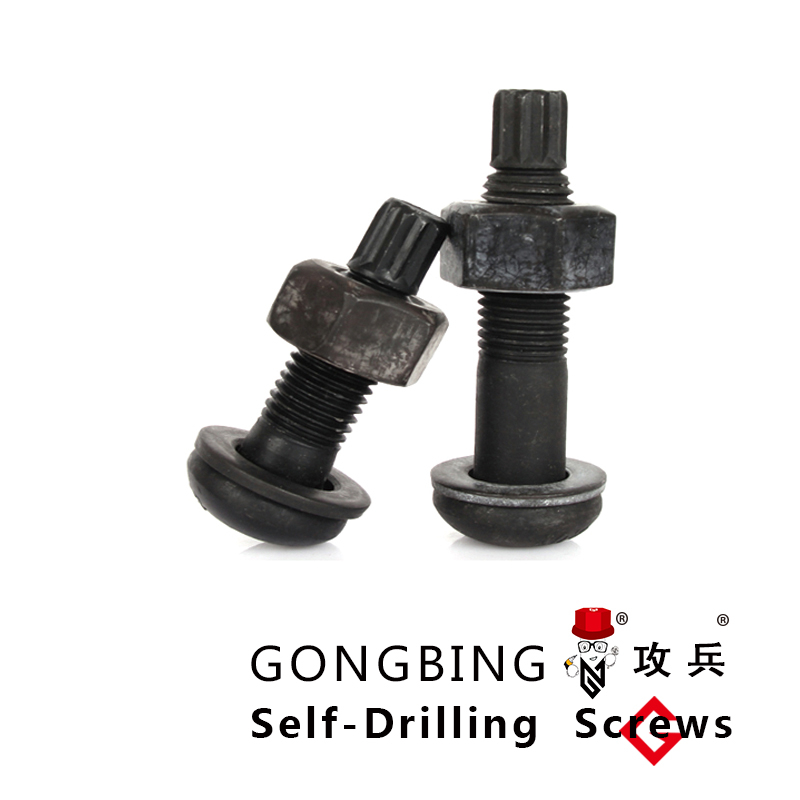small self drilling screws
Understanding Small Self-Drilling Screws A Comprehensive Guide
Small self-drilling screws have become an essential component in various construction and manufacturing applications. Known for their efficiency and ease of use, these screws eliminate the need for pre-drilling, making them a popular choice for both professional contractors and DIY enthusiasts. This article will delve into the features, benefits, applications, and best practices associated with small self-drilling screws.
What Are Small Self-Drilling Screws?
Small self-drilling screws, often referred to as Tek screws, are specially designed screws that come with a pointed tip. This point is engineered to drill its own hole in a variety of materials, including metal and wood, without the need for a separate pilot hole. They typically range in size from 4 to 10 and are available in various lengths, allowing for versatility in use.
Features and Benefits
1. Ease of Use The most compelling feature of self-drilling screws is their ease of installation. Users can quickly fasten materials together without additional tooling, saving both time and effort.
2. Versatility These screws can be used in a plethora of applications, from metal roofing to wooden structures. Their adaptability makes them suitable for numerous industries, including construction, automotive, and appliance manufacturing.
3. Enhanced Strength Self-drilling screws are designed to provide superior holding power. Their unique thread design enables them to grip the material tightly, resulting in durable and robust connections.
4. Corrosion Resistance Many small self-drilling screws come with coatings such as zinc plating or other corrosion-resistant treatments. This feature ensures longevity and reliability, particularly in outdoor settings or areas prone to moisture.
5. Cost-Effectiveness By eliminating the need for separate drilling equipment, these screws can significantly reduce labor costs, making them a cost-effective solution for both small and large projects.
Applications of Small Self-Drilling Screws
Small self-drilling screws are utilized in various applications, demonstrating their versatility across different fields
small self drilling screws

- Construction They are frequently used to fasten metal roofing panels, siding, and structural components. Their ability to penetrate thick materials without pre-drilling is particularly advantageous on job sites.
- Electronics In the electronics industry, small self-drilling screws are often employed to secure components within devices, with their small size enabling use in tight spaces.
- Furniture Assembly Many manufacturers utilize self-drilling screws for assembling furniture, allowing for quick assembly processes without compromising structural integrity.
- Automotive In vehicle assembly, these screws are used in various components to provide strong, reliable fastening solutions under conditions involving vibration and movement.
Best Practices for Using Small Self-Drilling Screws
To maximize the benefits of small self-drilling screws, consider the following best practices
1. Select the Right Size Choosing the appropriate size and length for your specific application is crucial. Using screws that are too short may result in weak connections, while overly long screws could damage the materials being joined.
2. Use the Correct Speed When driving self-drilling screws, using the right speed and torque is essential. High speeds may cause stripping or breaking, while too low speeds can lead to ineffective drilling.
3. Pre-Drill When Necessary In some cases, when working with very hard materials or for added precision, it may be beneficial to pre-drill a pilot hole, even if it is not necessary.
4. Regular Inspection For applications where long-term stress or exposure to elements is expected, regularly inspecting the integrity of joints secured with self-drilling screws can help catch any issues before they become serious problems.
Conclusion
Small self-drilling screws are a remarkable innovation in fastening technology, offering speed, strength, and versatility. Understanding their use and applications can greatly enhance project efficiency and outcomes. As construction and manufacturing continue to evolve, these screws remain a vital tool in various industries, proving that sometimes, the smallest components can make a significant impact.
-
Weatherproof Plastic Expansion Anchors for OutdoorNewsJun.06,2025
-
Sustainability in the Supply Chain: Eco-Friendly TEK Screws ProductionNewsJun.06,2025
-
Load-Bearing Capacity of External Insulation FixingsNewsJun.06,2025
-
Double Head Bolts: Enhancing Efficiency in Industrial MachineryNewsJun.06,2025
-
Corrosion Resistance in Chipboard Screws: Coatings for Wholesale DurabilityNewsJun.06,2025
-
Butterfly Toggle Bolts : Enhancing Structural ResilienceNewsJun.06,2025
